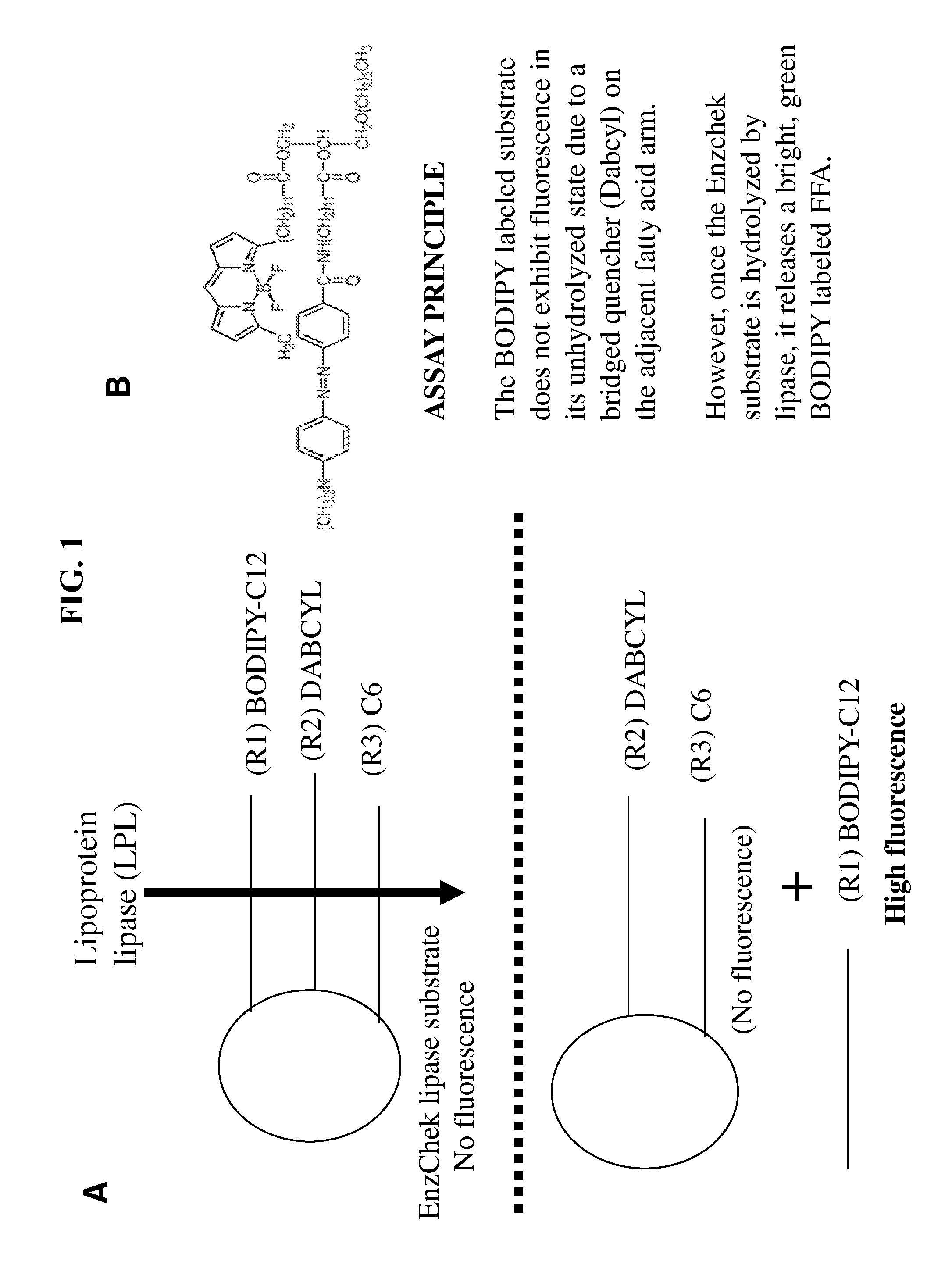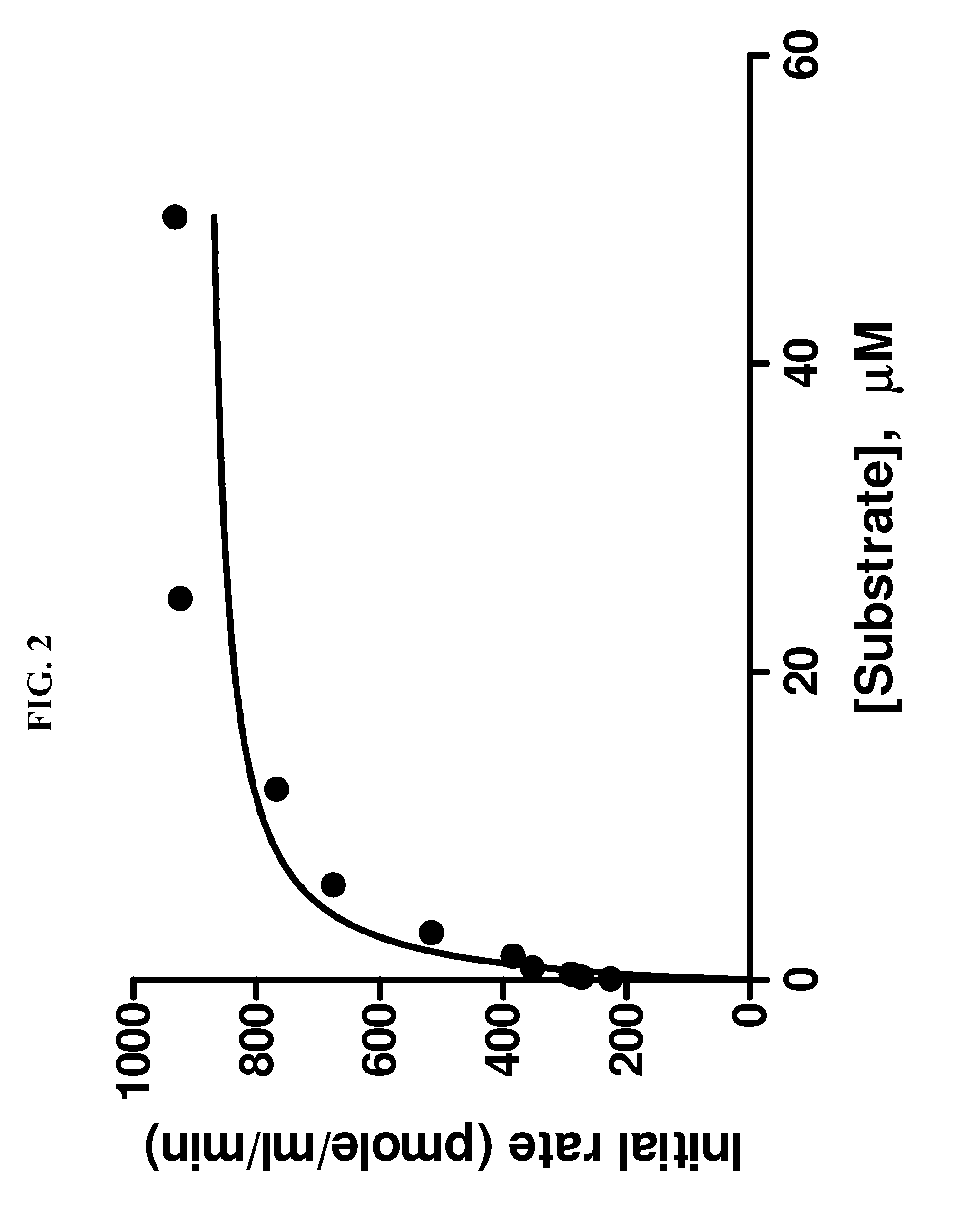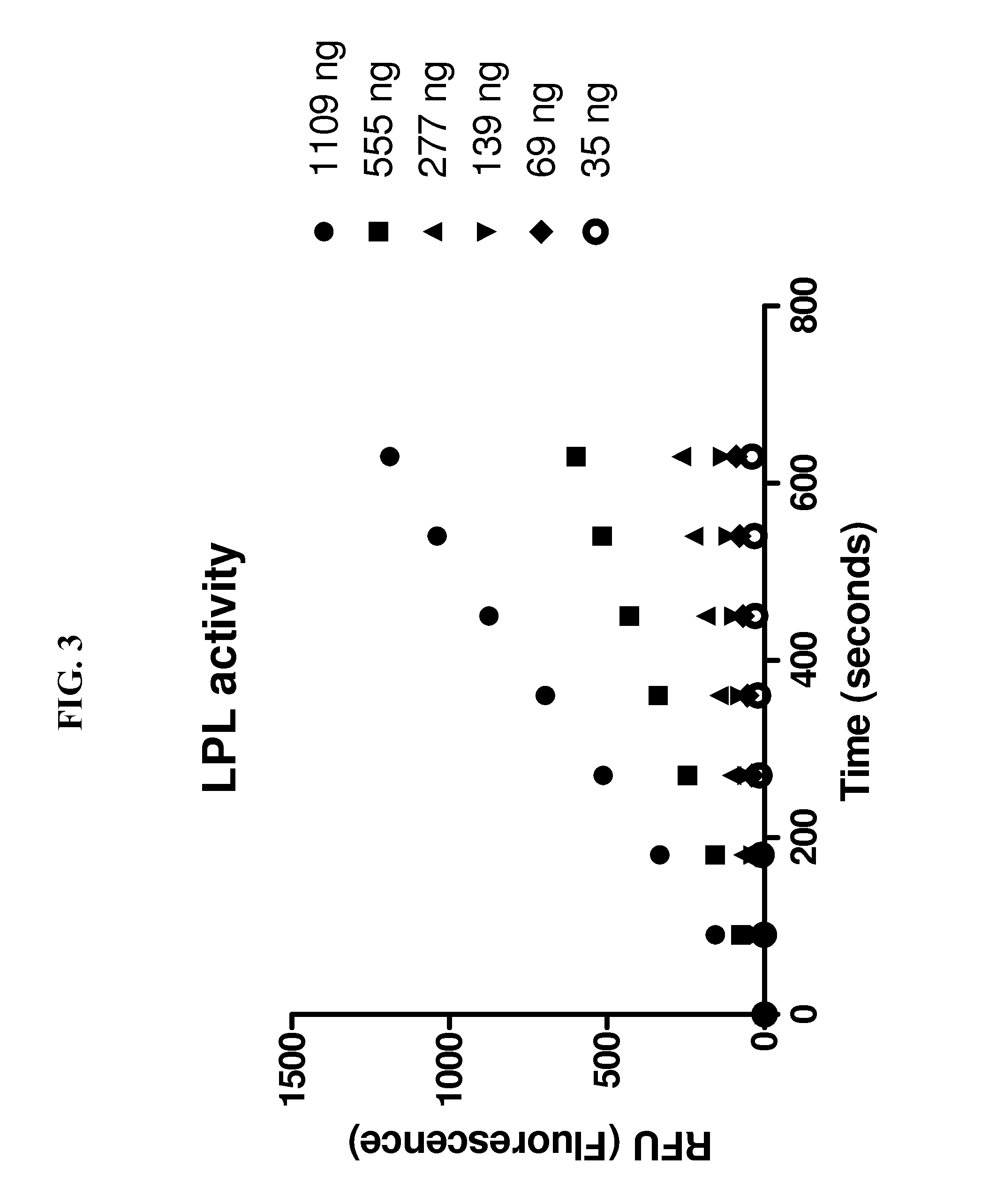Lipoprotein lipase assay
- Summary
- Abstract
- Description
- Claims
- Application Information
AI Technical Summary
Problems solved by technology
Method used
Image
Examples
example 1
[0042]In the following example, one embodiment of using a lipoprotein lipase assay is described.
[0043]In this embodiment, all reagents were purchased from Sigma-Aldrich unless otherwise stated. The specific activity of lipoprotein lipase (LPL) used for the experiments was about 5,700 units / mg. The boron-dipyrromethene (BODIPY)-labeled triglyceride (TG) analog EnzChek® and 4,4-difluoro-5-methyl-4-bora-3a,4a-diaza-s-indacene-3-dodecanoic acid (BODIPY 500 / 510 C1, C12) were purchased from Invitrogen™. Heat inactivated rat serum (HIS) was generated according to standard procedures.
[0044]The SpectraMax® M2 plate reader and SoftMax® Pro 5 from MDS Analytical Technologies were used for fluorescent measurements. The optimal wavelength was determined to be 482 nm / 515 nm (Emission / Excitation, Em / Ex) with a 495 nm filter cutoff. The linear capacity of these instruments is up to 2.4 μmol / well. An assay was performed in a black 96-well plate from Costar® in the presence of 0.15 M NaCl, 20 mM Tris...
example 2
[0050]The inventive method of measuring the activity of LPL as described above was compared to a traditional 1,2-o-dilauryl-rac-glycero-3-glutaric acid-(6′-methylresorufin) ester (DGGR) assay for measuring LPL activity. Samples tested using the DGGR assay were purified prior to incubation, the samples tested using the inventive method were not purified. The results can be seen in FIG. 4. In FIG. 4, initial rates were obtained using 9 minute, single point fluorescence measurements at increasing substrate concentrations. The EnzChek assay was carried out under conditions described in connection with FIG. 2. Background substrate hydrolysis was deducted from all measurements. Data were analyzed by linear regression, each data point is the mean of triplicate determinations, the assay was carried out three times with similar results.
[0051]The same batch of purified LPL was used for both assays. Both assays were linear in detecting LPL activity from 1-8 units of LPL per well. However, the ...
example 3
[0052]The inventive method of measuring the activity of LPL was also compared to a traditional assay using a Pyrene labeled TG substrate. Based on the difference in fluorescence properties between a Pyrene substrate and the BODIPY substrate of the inventive method, the inventive assay is about five times more sensitive. One disadvantage of the traditional Pyrene substrate is that it is water soluble and cannot be used to study the interfacial activation of LPL, as can the substrate of the inventive method. Another disadvantage is that the autofluorescence derived from plasma proteins is in a range of 300 nm to 410 nm and overlaps with the spectra of Pyrene (Excitation / emission 342 / 400 nm), thereby interfering with the results. In contrast, the BODIPY substrate used in the inventive method has an excitation / emission of 500 / 510 nm, which is out of the range of plasma proteins. This characteristic allows the assay of the present method to be better suitable for biological samples in wh...
PUM
 Login to View More
Login to View More Abstract
Description
Claims
Application Information
 Login to View More
Login to View More - R&D
- Intellectual Property
- Life Sciences
- Materials
- Tech Scout
- Unparalleled Data Quality
- Higher Quality Content
- 60% Fewer Hallucinations
Browse by: Latest US Patents, China's latest patents, Technical Efficacy Thesaurus, Application Domain, Technology Topic, Popular Technical Reports.
© 2025 PatSnap. All rights reserved.Legal|Privacy policy|Modern Slavery Act Transparency Statement|Sitemap|About US| Contact US: help@patsnap.com



